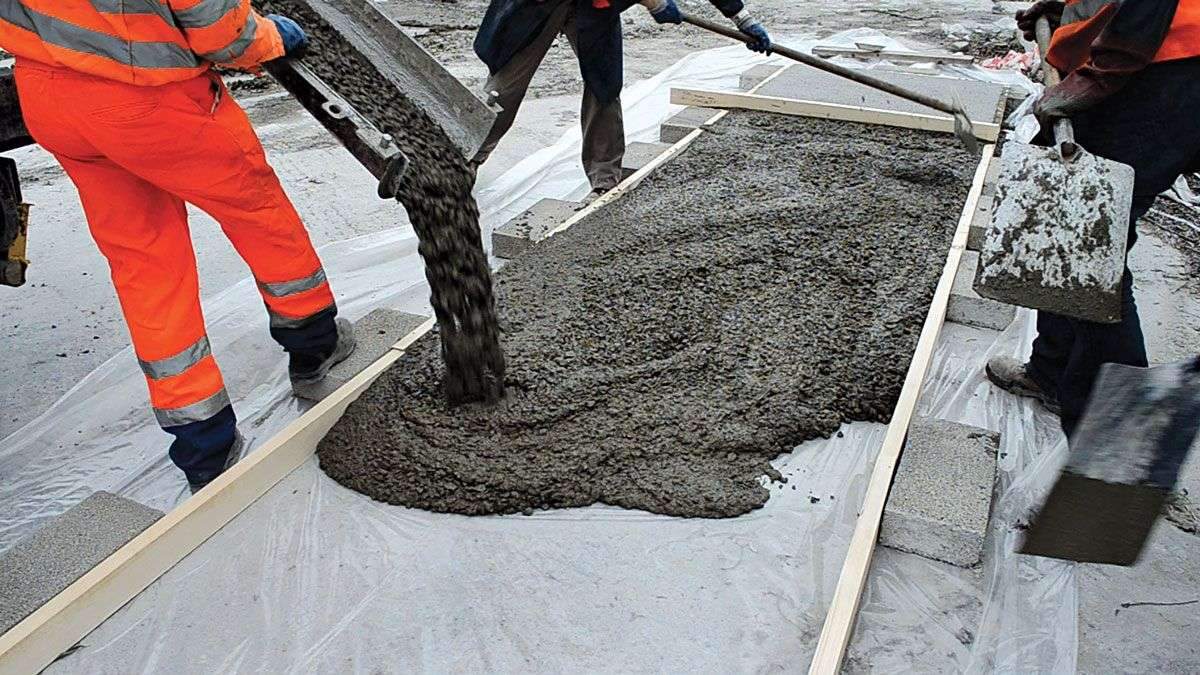Comparison between cement and concrete in building materials
Finding the right building materials for your next project can be challenging.
While cement and concrete are among the most used building materials in construction and they have many advantages and disadvantages.
So we’ll take a look at the differences between cement and concrete,
their advantages and disadvantages, and which one is best suited to your specific project needs.

What is cement?
Cement is a powdery substance made from limestone and clay.
It is used as a binder in construction, and its main purpose is to strengthen concrete.

What is concrete?
Concrete is a composite material made from cement, aggregate, and water.
It can be a durable and long-lasting building material used to create floors, walls, and foundations in various applications.
When creating concrete, cement acts as an adhesive that binds aggregates – such as stone or gravel – and water together.
When it sets, the cement hardens and creates a strong bond between the components,
creating an incredibly durable hard material that will last for years with proper maintenance and care.

Advantages of cement
Cement is a major building material in the construction industry thanks to its many advantages.
Cement is a powdery substance made from limestone and clay,
which is mixed with water to form a paste which is then mixed with sand and gravel to form a durable building material known as concrete.
It is an inexpensive and durable material that has been used for centuries in the construction of homes, buildings, bridges, and other structures.
The primary advantages of cement include its affordability, durability and versatility.
Due to its relatively low cost and easy availability, cement is one of the most widely used building materials in the world.
It is also incredibly strong and durable, making it ideal for building large, long-term structures.
In addition, cement is very versatile and can be used in many applications, from floors, walls,
and ceilings to foundations, patios, and driveways.
Cement also has an excellent ability to resist weathering and extreme temperatures.
Its water and frost resistance makes it a great choice for areas that experience high levels of precipitation or temperatures that drop to freezing levels in winter.
In addition, cement has a high fire resistance, which makes it an excellent choice for fire-resistant walls and foundations.
Finally, cement can be easily stained and painted, making it a great choice for adding attractive designs and colors to structures.
With the right techniques, it is easy to customize a cement structure and give it a unique and aesthetically pleasing appearance.

Advantages of concrete
Concrete is one of the most widely used building materials in the world, and for good reason.
Not only is it versatile and strong, it also has many advantages over traditional cement.
The following are some of the major advantages of using concrete in the construction of a building:
- Concrete is remarkably strong and can withstand all weather conditions, including heavy rain, temperature extremes, and high winds.
- It is also resistant to corrosion, making it an ideal material for building foundations and other weathered structures.
- Concrete is an affordable building material, and is usually cheaper to use than cement, making it the perfect choice for cost-conscious content creators.
- Concrete’s strength and durability make it an ideal material for any structure, from foundations and walls to driveways and patios.
- Concrete can be shaped into different shapes and sizes, allowing for creative designs and layouts.
- Concrete is one of the most environmentally friendly building materials available. It is made from natural materials, such as sand, gravel and water, and is highly recyclable.
- In addition, it requires very little energy, making it an excellent choice for green building projects.
- Concrete is easy to handle and can be poured on site quickly, which helps save time and money, as well as reduce the amount of labor required to complete the project.
Cement defects
Cement is widely used as a building material, but whether it is the best choice for a project depends on the specific application and specific components.
While it offers some advantages, there are also some drawbacks that contractors and homeowners should consider before using it.
One of the primary drawbacks of cement is the amount of time it takes to cure compared to concrete.
Concrete can quickly set, allowing construction crews to move on to other tasks.
On the other hand, cement requires additional curing time, thus slowing down the overall process.
This can add up to additional labor costs, as well as larger project schedules for contractors.
In addition to the extended curing time, cement is more prone to cracking than concrete.
This is because it is more brittle than concrete and is not designed to handle extreme weather conditions or pressure.
In cases of freezing weather or rapid temperature changes, the cement can crack and require replacement of the entire structural section.
This can be costly and time consuming.
Finally, it is also more expensive to use cement than concrete.
This is because it is more difficult to manufacture and less widely available.
Therefore, it is generally more expensive to obtain concrete than to obtain it.

Concrete defects
The first major drawback to using concrete is its cost. Concrete is more expensive than cement,
which makes it less attractive to builders on a tight budget.
In addition, the transportation and installation of concrete can be a significant cost and may exceed the cost of the materials themselves.
Another disadvantage of concrete is its susceptibility to cracking or collapsing.
While cement is naturally malleable, concrete can be easily weakened by weather and temperature changes.
This can lead to structural damage and require expensive repairs.
In addition, concrete can take a long time to cure and can be a source of frustration for impatient builders.
Finally, concrete is more difficult to work with than cement,
requiring specialized tools and expertise to mix and form properly.
This can increase the cost of the project and also delay completion.
In conclusion, cement and concrete have unique advantages and disadvantages that must be considered when choosing building materials.
Concrete is the best choice for larger projects such as foundations and bridges.
While cement is more suitable for smaller projects such as repairs and resurfacing.
Ultimately, the best building material for your project will depend on the specific requirements of the job.
For more architectural news








